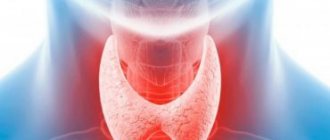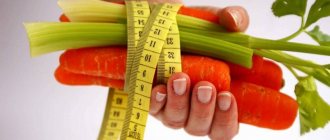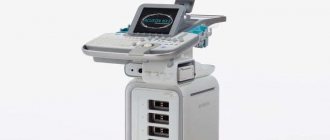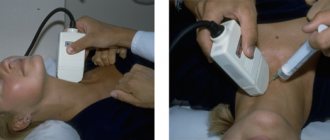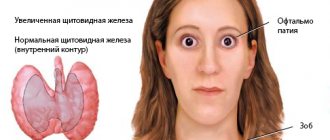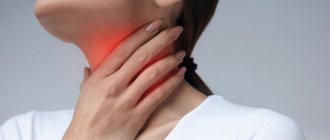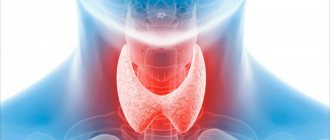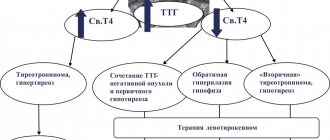Composition per 1 tablet:
Active substance:
potassium iodide - 0.131 mg (corresponding to 0.1 mg of iodine);
Excipients:
lactose monohydrate, magnesium hydroxycarbonate, gelatin, sodium carboxymethyl starch, colloidal silicon dioxide, magnesium stearate.
Description: round flat-cylindrical tablets of white or almost white color, with a chamfer and a score on one side.
Pharmacotherapeutic group: thyroxine synthesis regulator - iodine drug ATC code: H03SA
Analogues of Iodomarin
Level 4 ATC code matches:
Blue Yod
Potassium iodide
Synonyms of Iodomarin 100 are: Antisturmin , children's Iodine Vitrum , Iodide 100 , Iodine Vitrum 100 mcg , Iodandin 100 mcg , Iodbalance 100 mcg , Microiodide 100 , Potassium iodide Renewal 100 mcg .
Structural analogues of Iodomarin 200: 9 months Potassium iodide , Iodine Vitrum 100 mcg , Iodine Vitrum 200 mcg , Iodantine 200 mcg , Iodine balance 200 mcg , Microiodide 200 , Potassium iodide Renewal 200 mcg .
Iodine balance or Iodomarin - which is better?
Iodbalance and Iodomarin are generic drugs. Having analyzed why they are prescribed, how to take both drugs, the range of contraindications, as well as possible drug interactions, we can conclude that the only difference between the drugs is a slight difference in price ( Iodine balance is slightly cheaper than its analogue).
Pharmacological properties
Pharmacodynamics
Iodine is a vital trace element that is a component of the thyroid hormones - thyroxine and triiodothyronine. Thyroid hormones are involved in the development of all organs and systems, in the regulation of metabolic processes in the body: they are responsible for the exchange of proteins, fats, carbohydrates and energy in the body, regulate the activity of the brain, the nervous and cardiovascular systems of the reproductive and mammary glands, as well as the growth and child development.
Iodine deficiency is especially dangerous for children, adolescents, pregnant and lactating women.
Reviews about Yodomarin
Reviews for Iodomarin 100, like reviews for Iodomarin 200, are mostly positive. Using the drug for medicinal purposes can reduce the symptoms of the disease; when taking the tablets for preventive purposes, many people note a decrease in irritability, an improvement in general well-being and memory, and an increase in concentration.
There are no less good reviews for Iodomarin during pregnancy. In women, the use of this remedy helps prevent the development of iodine deficiency conditions and associated diseases, normalize the metabolism of proteins , lipids and carbohydrates , and ensure normal activity of the brain and cardiovascular system .
iodine intake is the key to normal physical and mental development.
In some reviews, people write that taking Iodomarin helped them bring their weight to normal levels. So, can the drug be used for weight loss? Endocrinologists answer that it is possible, but only according to the doctor’s indications.
In a number of situations, excess weight is a consequence of decreased thyroid function , and then it is impossible to lose it either with the help of diets or with the help of physical activity.
The manufacturer does not recommend taking Iodomarin for hypothyroidism , excluding, however, those cases where the disease is associated with obvious iodine .
It should be remembered that is responsible of the secretion of thyroid hormones , but the hypothalamic hormones, which, in turn, are controlled by the cerebral cortex, are responsible for regulating the influence of the pituitary gland on the thyroid gland .
Thyroid hormones also influence the pituitary gland , hypothalamus , a number of endocrine glands , the course of metabolic processes, and the condition of internal organs and their systems.
Thus, uncontrolled use of Iodomarin for the purpose of losing weight can provoke serious disturbances in the usual rhythm of thyroid activity and, as a consequence, the entire endocrine system of the body with all the ensuing consequences.
To gently stimulate thyroid function and activate metabolic processes, it is recommended to first review your diet, supplementing it with foods high in iodine (seafood, onions, garlic, eggplants, beets, radishes, persimmons, grapefruits, etc.), or at least replacing regular iodized salt.
Iodomarin is used as a dietary supplement. You can take it for weight loss only after consulting a doctor and not exceeding the recommended dose.
Pharmacokinetics
Suction
When taken orally, potassium iodide is almost completely absorbed in the small intestine.
Distribution
The average volume of distribution for healthy individuals is approximately 23 L (38% of body weight). The normal plasma iodine concentration ranges from 0.1 to 0.5 μg/dL. Accumulates in the thyroid gland, salivary glands, mammary glands and stomach tissues. The concentration in saliva, gastric juice and breast milk is approximately 30 times higher than in blood plasma.
Removal
Excreted by the kidneys, the concentration of iodine in urine relative to creatinine (mcg/g) is an indicator of its intake into the body.
Contraindications
- hypersensitivity to potassium iodide and/or any excipient in the drug;
- manifest hyperthyroidism;
- subclinical hyperthyroidism - in doses exceeding 150 mcg of iodine per day;
- solitary toxic adenomas of the thyroid gland and functional autonomy of the thyroid gland (focal and diffuse), nodular toxic goiter (with the exception of preoperative therapy for the purpose of blocking the thyroid gland);
- lactose intolerance, lactase deficiency, glucose-galactose malabsorption syndrome;
- Dühring's herpetiformis (senile) dermatitis.
The drug should not be used for hypothyroidism, except in cases where the development of the latter is caused by severe iodine deficiency. The use of the drug should be avoided during therapy with radioactive iodine, the presence or suspicion of thyroid cancer.
Use during pregnancy and breastfeeding
During pregnancy and breastfeeding, the need for Iodine increases, so it is especially important to use the drug Yodomarin® 100 in sufficient doses to ensure adequate intake of iodine into the body. Potassium iodide passes through the placenta and into breast milk. If a nursing woman takes potassium iodide, additional administration of the drug to breastfed infants is not required.
The use of the drug during pregnancy and breastfeeding is possible only in recommended doses. When carrying out therapy, it is necessary to take into account the amount of iodine supplied with food.
Iodomarin price, where to buy
The price of Iodomarin 100 in Russian pharmacies is about 145 rubles for package No. 100, the price of Iodomarin 200 is about 215 rubles for package No. 100 and about 135 rubles for package No. 50.
How much does Yodomarin cost in Ukraine?
You can buy Iodomarin 100 No. 100 for an average of 70-77 UAH, the cost of Iodomarin 200 is from 58 UAH (for package No. 50)
- Online pharmacies in RussiaRussia
- Online pharmacies in UkraineUkraine
- Online pharmacies in KazakhstanKazakhstan
ZdravCity
- Iodomarin for the expectant mother tablets 140 mg 30 pcsToll Manufacturind Services SL
366 RUR order
Pharmacy Dialogue
- Iodomarin (tab. 100 µg No. 100) Berlin-Chemie AG/Menarini
RUB 144 order
- Iodomarin (tab. 200 µg No. 50) Berlin-Chemie AG/Menarini
123 RUR order
- Iodomarin (tab. 200 µg No. 100) Berlin-Chemie AG/Menarini
RUB 241 order
- Iodomarin for the expectant mother tablets 140 mg No. 30Toll Manufacturing
403 rub. order
show more
Pharmacy24
- Iodomarin 100 mg No. 100 tablets Menarine von Heyden GmbH/ Berlin Chemi AG (Menarine Group), Nimechchina/Nimechchina
107 UAH.order - Iodomarin 200 mg No. 50 tablets Menarini von Heyden GmbH/ Berlin Chemi AG (Menarini Group), Nimecchina/Nimecchina
107 UAH order
PaniPharmacy
- Iodomarin tablets Iodomarin tablets 100 µg No. 100 Germany, Berlin-Chemie
108 UAH order
- Iodomarin tablets Iodomarin tablets 200 µg No. 50 Germany, Berlin-Chemie
111 UAH order
show more
Directions for use and doses
When determining the required dose of Yodomarin® 100, regional and individual characteristics of iodine intake from food must be taken into account. This is especially important when prescribing the drug to newborns and children under 4 years of age.
Prevention of iodine deficiency diseases: Newborns and children:
50−100 mcg of iodine per day (1/2 - 1 tablet of the drug Yodomarin® 100);
Adolescents and adults:
100−200 mcg of iodine per day (1−2 tablets of Yodomarin® 100);
During pregnancy and breastfeeding:
100−200 mcg of iodine per day (1−2 tablets of Yodomarin® 100).
Prevention of goiter relapse after its surgical removal or after completion of goiter treatment with thyroid hormone preparations: 100−200 mcg of iodine daily (1−2 tablets of the drug Yodomarin® 100).
Treatment of euthyroid goiter: Newborns and children:
100−200 mcg of iodine per day (1−2 tablets of the drug Yodomarin® 100);
Adolescents and young adult patients:
200 mcg of iodine per day (2 tablets of Iodomarin® 100).
The daily dose of the drug should be taken in one dose, after meals, with a sufficient amount of liquid. When prescribing the drug to newborns and children under 3 years of age, it is recommended to dissolve the tablet in a small amount (1 tablespoon) of boiled water at room temperature.
The use of the drug for prophylactic purposes is carried out for, as a rule, several months or years, and often throughout life.
For the treatment of goiter in newborns, in most cases, 2-4 weeks are sufficient; in children, adolescents and adults it usually takes 6−12 months or more.
The duration of treatment is determined by the doctor.
Iodine deficiency pathology of the thyroid gland: prevention and treatment
Doctors of many specialties face the problem of diffuse and nodular goiter: endocrinologists, surgeons, oncologists, radiologists, therapists, cardiologists, pediatricians. The diagnosis and treatment of these diseases concern endocrinologists, but therapists, cardiologists, neurologists, gastroenterologists, and sometimes psychiatrists have to deal with the consequences of functional disorders of the thyroid gland.
The development of diffuse and nodular forms of goiter is based on various reasons: iodine deficiency, genetically determined defects in the synthesis of thyroid hormones, goitrogenic factors associated with food, initial manifestations of autoimmune pathology. It has been established that in the Russian Federation the main cause of the development of diffuse and nodular forms of goiter is iodine deficiency. Studies conducted in the last decade have shown that there are no territories in Russia whose population would not be at risk of developing iodine deficiency diseases [2]. Iodine deficiency is associated with 90–95% of cases of enlarged thyroid gland.
In countries where there is iodine deficiency, diffuse and nodular forms of goiter predominate in the structure of thyroid diseases, and the relative frequency of poorly differentiated forms of cancer is higher.
Studies on the optimal levels of iodine content in food, at which goiter does not develop, have made it possible to establish standards for its consumption per day (WHO, 2001) [5]:
- preschool children (from 0 to 59 months) - 90 mcg;
- school-age children (from 6 to 12 years old) - 120 mcg;
- adults (over 12 years old) - 150 mcg;
- pregnant women and during breastfeeding - 200 mcg.
Iodine enters the body in the form of inorganic compounds or in organic form.
The body of a healthy person contains about 15 - 20 mg of iodine, of which 70 - 80% is found in the thyroid gland. Every day, the thyroid gland, with sufficient iodine intake, secretes 90–110 mcg of thyroxine and 5–10 mcg of triiodothyronine. The main stimulator of the synthesis and secretion of thyroid hormones is the pituitary thyroid-stimulating hormone (TSH). Thyroid hormones regulate the processes of energy production in the body, the synthesis of nucleic acids and proteins, as well as the functioning of organs and tissues. Under the influence of thyroid hormones, the central nervous system is formed in the fetus, intelligence develops, and mental and physical performance is maintained throughout life.
If the intake of iodine into the body is limited, normal secretion of thyroid hormones can only be achieved as a result of restructuring the function of the thyroid gland. At the first stage, iodine absorption by the thyroid gland increases. Next, a change occurs in the intrathyroid metabolism of iodine - the body more economically consumes the iodine formed during the destruction of thyroid hormones, using it again. Free iodine atoms are sent for the synthesis of triiodothyronine, the biological activity of which is three to five times higher than thyroxine. To capture more iodine, the thyroid gland increases in size - due to hyperplasia (number) and hypertrophy (volume) of thyroid cells, thus forming an endemic goiter. Endemic goiter is a predisposing factor for the development of many thyroid diseases, including nodules and less differentiated forms of cancer. If iodine deficiency is not replenished, then over time the functional activity of the thyroid gland decreases, the level of thyroid hormones in the blood drops, the metabolic rate slows down, i.e. hypothyroidism develops.
According to modern concepts, TSH is not the only stimulator of thyrocyte proliferation; its proliferative and trophic effects are mediated by other intracellular factors. Research in recent years has shown that iodine, when entering the thyrocyte, in addition to iodothyronines, forms compounds with lipids (iodolactones). Iodinated lipids serve as inhibitors of the production of IGF-1 and other growth factors. In the absence of this blockade, growth factors trigger proliferative processes, which result in thyrocyte hyperplasia.
In the goitrous thyroid gland, the most actively proliferating groups of cells or follicles form areas or “nodes” that are different from the surrounding tissue. There is rarely only one node. As a rule, there are many of them, and they are found in different segments of the thyroid gland. In some cases, as a result of somatic mutations, some nodes acquire the ability to function autonomously, i.e., independently of TSH. Diffuse forms of goiter are more common in children and adolescents and people of childbearing age. Nodular - in the older age group.
The simplest method for diagnosing goiter is palpation of the thyroid gland. If the doctor, based on palpation, concludes that the patient has an enlarged thyroid gland or palpates nodules in it, the patient is shown an ultrasound of the thyroid gland.
From a clinical point of view, goiter is a diffuse enlargement of the thyroid gland, determined either by palpation or using imaging methods. A goiter is an increase in the volume of the thyroid gland of more than 18 ml in women and more than 25 ml in men. A uniform enlargement of the thyroid gland is called a diffuse goiter; the presence of a formation in it is called a nodular goiter. In women, especially in iodine-deficient areas, goiter develops two to three times more often than in men, usually during periods when the need for thyroid hormones is increased - puberty and pregnancy.
“Nodular goiter” is a collective concept that combines focal lesions of the thyroid gland with various pathomorphological changes. These can be cysts, colloid nodes, benign or malignant tumors, in the vast majority of cases having an epithelial origin and representing adenomas and cancers. In this regard, a mandatory method of investigation for nodular goiter is a puncture biopsy followed by cytological clarification of the diagnosis. Nodular colloidal goiter that proliferates to varying degrees accounts for 75–90% of all nodular formations in the thyroid gland. The main reason for the development of colloidal proliferating goiter in the Russian Federation is iodine deficiency.
As a rule, a goiter (diffuse, nodular) of small size does not bother the patient. Complaints appear with symptoms of compression of the neck organs or with changes in the functional state of the thyroid gland. Most patients with thyroid nodules are in a euthyroid state, but as a result of the natural course of the disease, or after the body receives additional amounts of iodine with iodine supplements, or as part of iodine-containing pharmacological agents, the production of thyroid hormones by autonomous formations may increase, which leads to the development of thyrotoxicosis. The development of overt thyrotoxicosis in nodular and multinodular goiter may be preceded by a long period of subclinical thyrotoxicosis, which is defined as a reduced TSH level with normal levels of free fractions of thyroxine and triiodothyronine. Decompensated functional autonomy in clinical practice will manifest itself as nodular, multinodular toxic goiter. Scintigraphy of the thyroid gland in such patients reveals areas that actively absorb 131I or Tc99m isotopes (“hot” nodes).
The development of functional autonomy mainly in older people determines the clinical features of this disease. The usual symptoms of thyrotoxicosis, such as goiter, bulging eyes, tachycardia, weight loss, sweating, tremor of the hands and body, increased excitability, may be mildly expressed or completely absent. The clinical picture is usually dominated by cardiovascular and mental disorders: apathy, depression, lack of appetite, weakness, palpitations, heart rhythm disturbances, symptoms of circulatory failure. Patients often suffer from concomitant diseases of the cardiovascular system, pathology of the digestive tract, and neurological diseases, which masks the main cause of the disease. The predominance of certain symptoms forces patients to turn to a therapist, cardiologist, neurologist, gastroenterologist, and sometimes to a psychiatrist and very rarely to an endocrinologist.
Cardiologists, after prescribing the antiarrhythmic iodine-containing drug amiodarone or administering iodine-containing contrast agents during coronary angiography, may encounter the development of iodine-induced thyrotoxicosis due to the administration of pharmacological doses of iodine [3]. To clarify the size of the thyroid gland, the presence of nodes, and functional activity, the following are performed: ultrasound, color Doppler mapping, thyroid scintigraphy, X-ray examination, computed tomography (CT) and magnetic resonance imaging (MRI). Using ultrasound, the volume and echostructure and blood supply of the thyroid gland are determined. X-ray examination with barium contrast of the esophagus makes it possible to clarify the localization of the goiter and the presence of symptoms of compression of the neck organs. Based on the accumulation and distribution of the radiopharmaceutical, one can judge the functional activity of the thyroid gland, the nature of its lesion (diffuse or nodular), the volume of tissue after strumectomy, and the presence of ectopic tissue. Indications for CT and MRI are limited due to the high cost and complexity of the study. The results help diagnose substernal goiter, clarify the location of the goiter in relation to the surrounding tissue, and determine displacement or compression of the trachea and esophagus.
Today, thyroid diseases caused by iodine deficiency include: diffuse non-toxic (endemic) goiter, nodular (multi-nodular) non-toxic goiter, functional autonomy of the thyroid gland, iodine-induced thyrotoxicosis.
It’s a paradox, but in areas with insufficient iodine intake, the frequency of autonomous formations in the thyroid gland is much higher than in those where iodine prophylaxis is carried out.
The basic method of iodine prevention, available to the entire population of the Russian Federation, is iodization of table salt. However, during certain periods of life (childhood, adolescence, pregnancy, breastfeeding), the need for microelements increases, and the body needs regular additional intake of physiological doses of iodine. In such cases, individual or group iodine prophylaxis is carried out.
Group iodine prophylaxis - prevention on the scale of certain high-risk groups for the development of iodine deficiency diseases: children, adolescents, pregnant and lactating women, people of childbearing age. It is carried out by regular long-term use of medications containing a physiological dose of iodine, in particular iodomarin 100/200:
- for children under 12 years of age: 50-100 mcg per day;
- for adolescents and adults: 100-200 mcg per day;
- during pregnancy and breastfeeding: 200 mcg per day.
Individual iodine prophylaxis - prevention in individuals through long-term use of drugs containing a physiological dose of iodine.
As we have determined, the main cause of the development of goiter (diffuse, nodular/multi-nodular colloid goiter) in our regions is iodine deficiency. Consequently, the etiotropic option for the treatment of diffuse and nodular colloid forms of goiter would be the administration of iodine preparations [4]. The iodine preparation iodomarin 100/200 is prescribed according to age needs:
- children under 12 years of age: 100 mcg per day;
- adolescents and adults: 150–200 mcg per day;
- Pregnant and lactating women: 200 mcg per day.
If after six months there is a significant decrease or normalization of the size of the thyroid gland (palpation, ultrasound), it is recommended to continue taking iodomarin in the same doses in order to prevent recurrence of goiter.
If, while taking iodine preparations for six months, the size of the thyroid gland remains the same or increases, pathogenetic therapy with suppressive doses of L-thyroxine in combination with iodomarin is indicated. The TSH level should decrease below 1 IU/L (0.3–0.5 IU/L). A realistic dose of L-thyroxine is at least 75–100 mcg per day. If the patient has a goiter that is initially large in size - II degree of increase according to the WHO classification - treatment begins with combination therapy with L-thyroxine and iodomarin in the above doses. The duration of treatment should be at least 12 months; if the size of the thyroid gland is normalized, it is recommended to continue taking iodomarin in order to prevent recurrence of goiter.
In people of the older age group, especially in the presence of concomitant cardiac pathology, treatment with L-thyroxine should be carried out carefully. Treatment should begin with 12.5–25 mcg, increasing the dose by 12.5–25 mcg every one to two months until the TSH level decreases below 0.8 mU/l. If cardiac symptoms appear or worsen, it is necessary to reduce the dose of L-thyroxine and correct cardiac therapy. In case of diffuse damage to the thyroid gland without disruption of its function in people of the older age group, the use of iodomarin has no contraindications. In case of nodular colloid goiter, before prescribing iodine and thyroid hormones, it is necessary to exclude the functional autonomy of the thyroid gland. Functional autonomy may not manifest itself clinically. In these patients, the levels of thyroid hormones and TSH remain within normal limits, but scintigraphy of the thyroid gland reveals areas that actively absorb 131I or Tc99m isotopes (“hot” nodes). This kind of autonomy is called compensated. If the production of thyroid hormones by autonomous formations exceeds the physiological requirement, the patient will develop thyrotoxicosis: subclinical (TSH is reduced, the levels of free thyroxine and free triiodothyronine are within normal limits) or manifest (TSH is reduced, the levels of thyroid hormones are increased). The most informative method for diagnosing functional autonomy is scintigraphy while taking L-thyroxine at a dose of 200 mcg for 10 days (suppressive scintigraphy). However, in elderly people, especially in the presence of coronary artery disease, taking a suppressive dose of L-thyroxine may have undesirable consequences.
It should be noted that nodes of small size, without functional disorders, with a low growth rate do not have a negative effect on the body and are not an indication for surgical treatment or the prescription of thyroid hormones. They only require taking iodine preparations (iodomarin) in physiological quantities (100 - 150 mcg per day) and observation.
After surgical treatment for nodular colloid goiter, if bilateral subtotal resection of the thyroid gland was performed, hypothyroidism develops, and patients subsequently require replacement therapy with L-thyroxine.
After removal of one lobe, L-thyroxine is prescribed to patients whose TSH levels exceed the upper limit of normal one month after surgery. Iodine preparations (iodomarin) are prescribed to all patients without fail to prevent recurrence of goiter.
In conclusion, it should be emphasized once again that the main reason for the development of diffuse and nodular colloid forms of goiter in the regions of the Russian Federation is iodine deficiency. Therefore, regular replenishment of iodine deficiency prevents the development of diffuse and nodular forms of goiter and functional disorders of the thyroid gland in the future.
For questions about literature, please contact the editor
N. Yu. Sviridenko, Doctor of Medical Sciences Endocrinological Research Center of the Russian Academy of Medical Sciences, Moscow
Overdose
Symptoms:
staining of the mucous membranes brown, reflex vomiting (if there are starch-containing components in the food, the vomit becomes blue), abdominal pain and diarrhea (blood may be present in the stool). In severe cases, dehydration and shock may develop. In rare cases, esophageal stenosis has occurred. Cases of death were observed only after taking large amounts of iodine (30-250 ml of iodine tincture).
In rare cases, long-term overdose of potassium iodide can lead to the development of so-called “iodism”, i.e. iodine intoxication: metallic taste in the mouth, swelling and irritation of the mucous membranes (runny nose, conjunctivitis, gastroenteritis, bronchitis). Potassium iodide can activate latent inflammatory processes such as tuberculosis. Possible development of edema, erythema, acne-like and bullous rash, hemorrhage, fever and irritability.
Treatment for acute intoxication:
gastric lavage with a solution of starch, protein or 5% sodium thiosulfate solution until all traces of iodine are removed. Symptomatic treatment of water-electrolyte imbalances, anti-shock therapy.
Treatment for chronic intoxication:
withdrawal of potassium iodide.
Treatment of iodine-induced hypothyroidism:
abolition of potassium iodide, normalization of metabolism with the help of thyroid hormones.
Treatment of iodine-induced thyrotoxicosis:
for mild forms of treatment is not required; in severe forms, thyreostatic therapy is required (the effect of which is always delayed). In severe cases (thyrotoxic crisis), intensive therapy, plasmapheresis or thyroidectomy are necessary.
In the case of hyperthyroidism, we cannot talk about an overdose as such, since hyperthyroidism can be caused by an amount of iodine that is normal in other countries.
Side effects
When used prophylactically at any age, as well as when used therapeutically in newborns, children and adolescents, as a rule, no side effects are observed. In rare cases, constant use of the drug can lead to the development of “iodism”, which can be manifested by a metallic taste in the mouth, swelling and inflammation of the mucous membranes (runny nose, conjunctivitis, bronchitis), “iodine fever”, “iodine acne”. Extremely rare - Quincke's edema, exfoliative dermatitis. When using the drug at a dose of more than 150 mcg/day, latent hyperthyroidism can become manifest. When using doses from 300 to 1000 mcg/day, the development of hyperthyroidism is possible (especially in elderly patients suffering from goiter for a long period, in the presence of nodular or diffuse toxic goiter).
Interaction with other drugs
Iodine deficiency increases, and iodine excess decreases, the effectiveness of hyperthyroidism treatment with antithyroid drugs. Therefore, before or during treatment for hyperthyroidism, it is recommended to avoid any iodine intake if possible. On the other hand, antithyroid drugs inhibit the conversion of iodine into an organic compound in the thyroid gland and, thus, can cause the formation of goiter.
Substances that enter the thyroid gland through the same mechanism as iodides can compete with iodine and inhibit its uptake by the thyroid gland (for example, perchlorate, which also inhibits the recycling of iodides within the thyroid gland). Iodine absorption may also be reduced when using drugs that do not themselves enter the thyroid gland, for example, thiocyanate in concentrations exceeding 5 mg/dl.
Iodine uptake by the thyroid gland and its metabolism are stimulated by endogenous and exogenously administered thyroid-stimulating hormone (TSH).
Simultaneous treatment with high doses of iodine and lithium salts can contribute to the occurrence of goiter and hypothyroidism. High doses of potassium iodide in combination with potassium-sparing diuretics can lead to hyperkalemia.
special instructions
It should be taken into account that during drug therapy in patients with renal failure, hyperkalemia may develop. Before starting therapy, it is necessary to exclude the presence of hyperthyroidism or nodular toxic goiter in the patient, as well as a history of these diseases. If there is a predisposition to autoimmune thyroid diseases, the formation of antibodies to thyroid peroxidase is possible. Saturation of the thyroid gland with iodine can prevent the accumulation of radioactive iodine used for therapeutic or diagnostic purposes. In this regard, it is not recommended to take the drug before carrying out activities using radioactive iodine.

